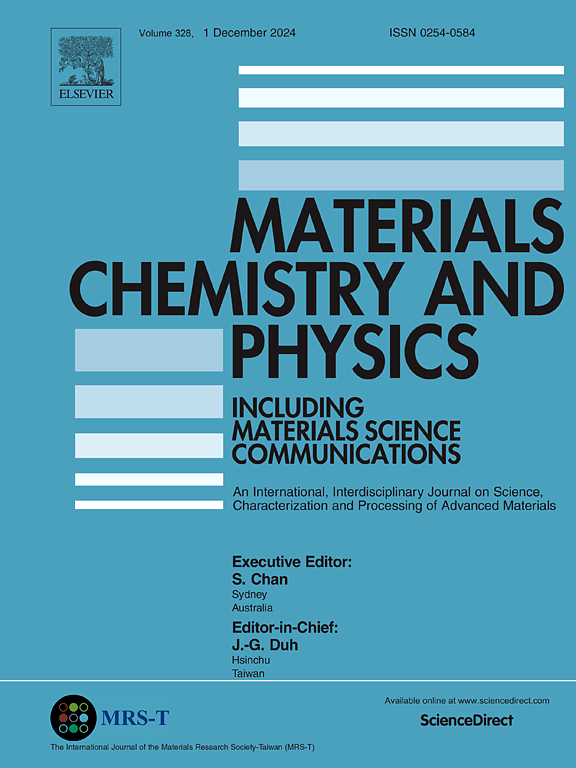通过氢氧爆炸制备 Fe@C 纳米粒子
IF 4.3
3区 材料科学
Q2 MATERIALS SCIENCE, MULTIDISCIPLINARY
引用次数: 0
摘要
为了研究气爆法制备的Fe@C纳米粒子的生长过程,进行了氢氧爆炸实验和数值模拟。分析了氢气浓度对爆炸波传播的影响、爆炸参数的变化以及Fe@C纳米粒子的生长过程。结果表明,封闭管内的氢氧爆炸包括爆炸波的传播阶段和衰减阶段,它们受氢气浓度的影响很大。当氢气浓度从 66.7 vol% 增加到 80 vol% 时,传播阶段的爆炸波将被爆燃波取代。爆炸过程中的速度、压力和温度峰值一般呈下降趋势,爆炸反应后衰减阶段的衰减速度逐渐减慢。氢氧爆炸制备的 Fe@C 纳米粒子的形貌与爆炸波的传播和衰减密切相关,可以通过调节氢气浓度来控制。当 H2-O2 混合气体中的氢浓度为 66.7 vol% 时,爆炸反应形成了恶劣的温度和压力环境,衰减阶段的爆燃波迅速衰减,从而获得了 Fe@C 纳米粒子。当氢气浓度达到 80 vol%时,衰减阶段爆燃波的速度和衰减速度减慢,延长了单位时间间隔内的高温时间,为 CNT 的生长创造了相对温和的温度和压力环境。然后制备出含有大量 CNTs 的 Fe@C 纳米粒子。该研究为气态爆轰法可控制备 Fe@C 纳米粒子的研究提供了参考。本文章由计算机程序翻译,如有差异,请以英文原文为准。
Preparation of Fe@C nanoparticles via hydrogen-oxygen explosion
In order to study the growth process of Fe@C nanoparticles prepared by gas explosion method, experiments and numerical simulations of hydrogen-oxygen explosion were carried out. The influence of hydrogen concentration on the propagation of explosion wave, the variation of detonation parameters and the growth of Fe@C nanoparticles were analyzed. The results show that the hydrogen-oxygen explosion in a closed tube includes the propagation stage and the attenuation stage of the explosion wave, and they are greatly affected by the hydrogen concentration. When the hydrogen concentration increases from 66.7 vol% to 80 vol%, the detonation wave in the propagation stage will be replaced by a deflagration wave. The peak values of velocity, pressure, and temperature in the explosion process generally show a decreasing trend, and the attenuation speed in the attenuation stage gradually slows down after the explosion reaction. The morphology of Fe@C nanoparticles prepared by the hydrogen-oxygen explosion is closely related to the propagation and attenuation of explosion waves, and it can be controlled by adjusting the hydrogen concentration. When the hydrogen concentration in H2–O2 mixture gas is 66.7 vol%, the explosion reaction forms a severe temperature and pressure environment, and the deflagration wave in attenuation stage decays rapidly, as a result, the Fe@C nanoparticles were obtained. As the hydrogen concentration reaches 80 vol%, the velocity and attenuation speed of the deflagration wave in attenuation stage slows down, which prolongs the high-temperature time within the unit interval, and creates a relatively mild temperature and pressure environment for the growth of CNTs. Then the Fe@C nanoparticles with a large number of CNTs were prepared. This study provides a reference for the study of controlled preparation of Fe@C nanoparticles by gaseous detonation method.
求助全文
通过发布文献求助,成功后即可免费获取论文全文。
去求助
来源期刊

Materials Chemistry and Physics
工程技术-材料科学:综合
CiteScore
8.70
自引率
4.30%
发文量
1515
审稿时长
69 days
期刊介绍:
Materials Chemistry and Physics is devoted to short communications, full-length research papers and feature articles on interrelationships among structure, properties, processing and performance of materials. The Editors welcome manuscripts on thin films, surface and interface science, materials degradation and reliability, metallurgy, semiconductors and optoelectronic materials, fine ceramics, magnetics, superconductors, specialty polymers, nano-materials and composite materials.
 求助内容:
求助内容: 应助结果提醒方式:
应助结果提醒方式:


